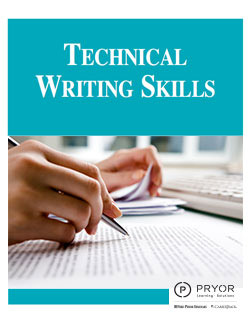What are “technical documents”? And why you benefit from learning how to write them better?
They come in all forms and sizes: market research studies, project tracking reports, job descriptions, even an inter-office memo explaining a change in policy. Any kind of objective, informative writing counts as a technical piece. Why you? Because there’s so much riding on your ability to write this kind of document. If the writing you and your staff do is confusing and hard to follow, readers stop reading (no matter how much time or research went into it). But when your writing is clear and to-the-point, your internal and external clients will look forward to reading documents you’ve authored.
<!--read more-->
Your staff will discover a powerful, proven writing system designed specifically for technical assignments. And you’ll learn specific skills to help you:
- Sort information, organize your thoughts and cut to the core of a complex issue
- Write in language that matches your readers’ level of experience and understanding
- Summarize difficult data and intricate details in a crisp, concise overview
- Create strong transitions that keep your readers moving from one point to the next
- Create illustrations, charts, graphs — even multi-media visuals — that support your writing and help clear up confusing material
- Use design principles that grab attention and guide your readers where you want them to go
As a result of this training:
- Typical projects will be turned into personal challenges
- Employees will be involved in designing their tasks and responsibilities
- Friendly, positive competition will be promoted and encourage employees to new heights
- Incentives and reward programs will really work
- Employees will demonstrate pride in their work
- Employees will take responsibilities for their work and choices
- Use the skills you learn at this course and you’ll notice a big difference in the ways people respond to your writing
- Your thoughts will be better organized — enabling readers to make better-informed decisions
- You’ll make your point quickly and clearly, saving valuable time for everyone
- Your names on a document will translate to “Read me now” in the minds of the people you’re writing to
